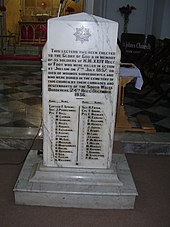Jhelum /ˈdʒeɪləm/ (Urdu, Punjabi: جہلم) (Greek: Αλεξάνδρια Βυκεφάλους Alexandria Bucephalous)is a city on the correct bank of the Jhelum River, in the locale of a similar name in the north of Punjab area, Pakistan. Jhelum is known for giving an expansive number of fighters to the British Army before freedom and later to the Pakistan military because of which it is otherwise called city of troopers or place where there is saints and warriors. Jhelum is a couple of miles upstream from the site of the Battle of the Hydaspes between the armed forces of Alexander of Macedonia and Raja Porus. A city called Bucephala was established close-by to celebrate the passing of Alexander's stallion, Bucephalus. Other remarkable destinations adjacent incorporate the sixteenth century Rohtas Fort, the Tilla Jogian complex of antiquated sanctuaries, and the sixteenth century Grand Trunk Road which goes through the city. As indicated by the 1998 evaluation of Pakistan, the number of inhabitants in Jhelum was 145,647 and in 2012 its populace is 188,803. The name of the city is gotten from the words Jal (unadulterated water) and Ham (snow), as the waterway that courses through the stream starts in the Himalayas. There are various businesses in and around Jhelum city, including a tobacco manufacturing plant, wood, marble, glass and flour factories

History
Ancient
The Rajputs, Jats and Ahirs, who now hold the Salt Range and its northern level separately, seem to have been the most punctual tenants of Jhelum. The historical backdrop of Jhelum goes back to the semi-legendary time of the Mahabharata. Hindu convention speaks to the close-by Salt Range as the shelter of the five Pandava siblings amid the time of their outcast. The following significant point in the historical backdrop of the area was the Battle of the Hydaspes between Alexander the Great and the nearby ruler, Porus. Abisares (or Abhisara; in Greek Αβισαρης), called Embisarus (Eμ Oβισαρoς) by Diodorus,was an Indian people ruler of abhira plummet past the waterway Hydaspes, whose region lay in the mountains, sent consulates to Alexander the Great both previously, then after the fact the victory of Porus in 326 BC, albeit slanted to uphold the side of the last mentioned. Alexander permitted him to hold his kingdom, as well as expanded it, and on his demise selected his child as his successor. The Gakhars seem to speak to an early flood of heros from the west, who still possess a substantial tract in the mountain north to tilla go. Gakhars were the overwhelming race amid the early Muslim period and they since a long time ago kept on holding their autonomy, both in Jhelum itself and in the neighboring area of Rawalpindi.
Medieval
In 997 CE, Sultan Mahmud Ghaznavi, assumed control over the Ghaznavid line domain set up by his dad, Sultan Sebuktegin. In 1005 he vanquished the Shahis in Kabul and tailed it by the successes of Punjab locale including Jhelum. The Delhi Sultanate and later Mughal Empire administered the area. The Punjab locale turned out to be prevalently Muslim because of minister Sufi holy people whose dargahs speck the scene of Punjab area.

Later Periods
After the decrease of the Mughal Empire, the Sikh attacked and possessed Jhelum District. The Muslims confronted extreme limitations amid the Sikh run the show. In 1849 Jhelum go with whatever is left of the Sikh domains to the British. In 1857 the fourteenth Native Infantry positioned at Jhelum town mutinied, and showed an incredible guard against a constrain sent from Rawalpindi to incapacitate them, yet deserted for the night taking after the activity, with the principle body being in this manner captured by the Kashmiri experts, into whose domain they had gotten away.
British Raj
Amid British control, Jhelum was associated by the North-Western Railway to different urban areas in the Indian Empire, 1,367 miles from Calcutta, 1,413 from Bombay, and 849 from Karachi. The populace as per the 1901 evaluation of India was 14,951.
Independence
The transcendently Muslim populace bolstered Muslim League and Pakistan Movement. After the freedom of Pakistan in 1947, the minority Hindus and Sikhs relocated to India while Muslim evacuees from India settled down in the Jhelum District.



No comments:
Post a Comment